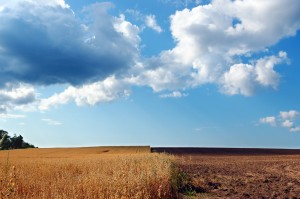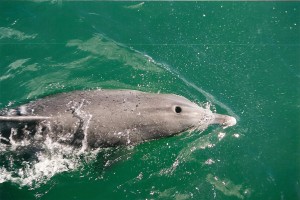Worldlog week 43 – 2013
On 16 October it was World Food Day. 57 Days after Earth Overshoot Day, the day on which we exceeded the reproductive capacity of the earth this year and hit a new record ecological budget deficit. On 16 October one billion people went to bed with hunger. People are not hungry because too little food is produced. The earth offers enough for everyone’s needs. But next to those one billion hungry people are one billion people who suffer overweight.

We contend with a distorted division of food and forms of exhaustion, which, in our generation, will lead to scarcity of drinking water, phosphate and biodiversity among other things. Furthermore, we have to watch out for a possible shortage of cattle food due to poor harvests as a result of the neglect of our climate.
Research of the University of Minnesota showed us last month that there is definitely hope for a growing world population, on the condition that the policy will be substantially changed. With the current arable farming area we should be able to feed more than 10 billion people, provided that we do not waste harvests on cattle food and biofuel.
Cattle farming on a global basis takes up 80% of all agricultural lands. The excessive animal protein consumption and production do not only cause serious overweight and animal suffering here, but also hunger and destruction in the rest of the world. The tropical rain forest is still cut down on a large scale for the massive production of cattle food. As a result, the production of meat is accountable for 30% of the global biodiversity loss.
A study into the future of Dutch animal husbandry indicates that we would need four globes to fit our lifestyle when the rest of the world takes over our consumption pattern. Aiming for healthy agriculture, close to home, may close the raw materials cycle again, reduce our food dependency and give the world an example of good sustainability. A true sustainable agriculture will repair the connection between the consumer and the food producer and will ensure that farmers get a fair price for a fair product.
The government will have to encourage the Netherlands to consider knife and fork as the most important weapons in the fight against climate change, biodiversity loss and animal suffering.
In my Worldlog of week 40 I told you about the successful stopping of dolphin slaughter on the Faroe Islands. This week we also have some good news for the dolphins in Japan. Our motion, which calls the Dutch government to advocate internationally for an end to the annual mass slaughter of dolphins at Taiji (Japan), was adopted!
Each year thousands of wild dolphins are driven together at Taiji (and the Faro Islands). The animals are killed in a barbaric way, resulting in one big bloodbath. Japan has a great share in these drives, so that they can sell wild dolphins for a lot of money to dolphinariums, sea aquariums and touristic programmes for swimming with these animals. The other dolphins, approx. 23,000 dolphins per year, are slaughtered for their meat.

Commercial hunting of whales is illegal, but small cetaceans, including dolphins, have still not been included in the protection programme of the International Whale Commission (IWC). Thanks to our adopted motion the government now has to aim at expansion of the protection regime of the IWC, so that the hunting of small cetaceans can also be tackled.
Click here for the trailer of the new film of the Blackfish. This film is highly recommended!
And look here or read here about the wonderful action of artist Banksy: Sirens of the Lambs!
Until next week!